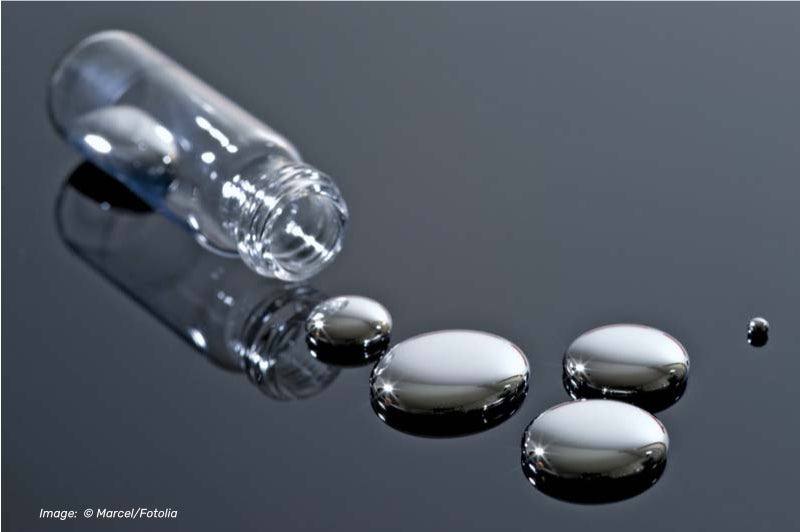
Mercury used to be fun. Remember when our middle school science teachers would let us play with it? Although it has always been known to be toxic, for centuries people used cosmetics laced with mercury to eliminate freckles and blemishes. In the Renaissance, the liquid metal was used as a facial peel to smooth small pox scars. And who can forget the Victorian hat makers who often succumbed to erethism, a manic delirium caused by mercury poisoning.
But it’s only been in the last decades that the true danger of widespread mercury contamination has become apparent. We continue to release large amounts of mercury into the air. Facilities that incinerate medical wastes and coal-fired power plants are among the greatest air polluters when it comes to mercury. Products like fluorescent light bulbs, thermostats, and electrical components containing mercury continue to be manufactured in large volumes, and these products eventually wind up in landfills and dumping sites. Once mercury has found its way into the air or the soil, it has a snowball effect as it moves through lakes, streams, rivers, and oceans where it becomes a toxic contaminant for fish. It’s no wonder that some people have become skeptical about eating the 2 servings of seafood a week recommended by the American Heart Association and others. But...
Do the Health Benefits of Seafood Outweigh the Mercury Risks?
Fish has always been recognized to be an excellent source of protein. In more recent years, seafood has also been recognized as excellent sources of omega 3 fatty acids. So, do the nutritional benefits of fish, including their rich omega-3 fatty acid content, outweigh the risk of mercury exposure?
A study published in the February 17, 2007 issue of The Lancet answers this question with a definite "yes”. The authors conclude that the nutritional benefits of fish outweigh the risk of mercury exposure, provided that (1) lower mercury fish are chosen for consumption, and (2) total weekly intake of fish stays fairly restricted to 7-10 ounces (3 servings) per week. Moreover, Seafood consumption has proven to be directly correlated to improved memory and a reduced chance of developing Alzheimer’s disease later in life, regardless of the level of mercury found in the brain… thus busting the theory that mercury in seafood is correlated to an Alzheimer’s diagnosis.
Practical Tips for Fish Eaters and Those Who Feed Them: Avoid Larger Fish, Aim for Smaller
Larger fish, since they are longer-lived, typically have much more time to accumulate mercury than smaller, shorter-lived fish. Mercury therefore tends to be more concentrated in these fish. While this relationship does not always hold true, it can be a good rule of thumb when other details about fish are not known.
Examples of Higher Risk Fish: Swordfish, king mackerel (ono), shark, and great northern tilefish. These fish often contain more than 1 milligram of mercury per kilogram of weight and should be consumed only sparingly.
Lower Risk Fish include Wild Alaska Salmon, West Coast Dover Sole, Atlantic Sea Scallops, and Wild Gulf Shrimp. These fish have consistently shown up in research studies as the lowest-risk fish when it comes to mercury contamination. Some farm-raised trout and some farm-raised catfish also seem to fall into this lowest-risk category.
The Best of the Best, from Sea to Table
Sea to Table Wild Alaskan Salmon is probably the best fish you can eat that has the lowest levels of heavy metals. It is high in Omega-3 fatty acids which are beneficial for so many things, including memory, eye and heart health.
← Older post Newer post →

